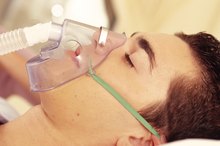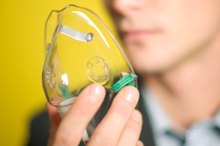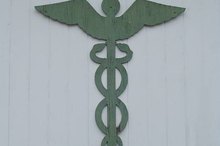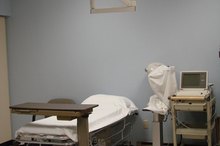How to Troubleshoot a CPAP RemStar Auto M Series
The REMstar Auto M Series CPAP machine from Philips Respironics is one of the new generation of smart continuous positive air pressure (CPAP) devices that continually adjusts the pressure it delivers to the patient. It is used to treat obstructive sleep apnea as well as other conditions that cause difficulty in breathing, especially while sleeping. While the circuitry and programming of the Auto M Series is quite advanced, user operation is very simple. A few things can sometimes go wrong, however, and it's good to know what to do when one of these problems crops up.
Responding to Audible Alarms
Respond to a System Error alarm (two beeps followed by two beeps) by unplugging the unit and plugging it back in. If the alarm continues, contact your home health provider.
How to Adjust the Airflow on a ResMed CPAP S6
Learn More
Respond to a Smart Card Error (one beep followed by one beep) by removing the smart card from the slot on the back of the device. Reinsert the card, making sure that the arrow on the card is on top and pointing toward the device. If the alarm continues, contact your home health provider for a new card.
Respond to a Mask Leak Error (one beep followed by one beep, with the words “Mask Leak” flashing on the display) by pressing any of the display buttons to silence the alarm. Make sure that all tubing is securely connected to the machine and the CPAP mask. Make sure your headgear is properly adjusted to hold the mask securely against your face or nose. Touch the "Start" button to begin the flow of air. If the Mask Leak Error continues, contact your home health provider.
- Respond to a System Error alarm (two beeps followed by two beeps) by unplugging the unit and plugging it back in.
- Respond to a Smart Card Error (one beep followed by one beep) by removing the smart card from the slot on the back of the device.
Troubleshooting Other Problems
How Can I Tell If My Heart Rate Monitor Needs a New Battery?
Learn More
Check the power cord connections at the wall outlet and the machine if nothing happens when you plug the machine in. If the cord is securely attached, check to see that there is power coming to the wall outlet. If the outlet has power and nothing happens when you plug the machine in, contact your home health provider.
Contact your home health provider if you hear an audible beep when you plug the machine but air does not flow when you touch the start button. If this happens, the blower may be defective.
Reboot the machine if its display is flickering or appears erratic. Do this by unplugging the machine, waiting for a minute, and then plugging it back in. If the problem persists, make sure that the device is located well away from other devices that create strong magnetic fields, such as TVs and air conditioners. If relocation still does not fix the problem, contact your home health provider.
Check the pressure setting of your machine if the Ramp feature, which slowly increases the air pressure to your prescribed pressure, does not work. Access the screen by pressing the right arrow key until you see a screen titled “Ramp Start Pres." If it is set to the minimum setting (4.0 cm H2O), you will need to set a higher starting pressure for Ramp feature to work. If you don't see this screen at all, it means your respiratory therapist has not enabled ramping for your device.
Check the air filters in back of the device if the air out of the mask seems warmer than usual. If the filters are dirty, wash or replace them. If the problem persists, contact your home health provider.
Tips
Most insurance companies are very good about covering replacement parts for CPAP machines if something goes wrong. If these troubleshooting steps don't fix the problem, don't hesitate to contact your respiratory therapist to get a replacement part or a whole new machine. If you get a Smart Card Error, your CPAP machine will continue to function normally; it just won't record data when it operates. Have the card replaced at your earliest convenience.
Warnings
Obstructive sleep apnea is a potentially dangerous condition that has been linked to high blood pressure, stroke and accidental death. If your CPAP machine is not functioning, contact your respiratory therapist or home health equipment provider immediately for a replacement.
- Check the power cord connections at the wall outlet and the machine if nothing happens when you plug the machine in.
- If the outlet has power and nothing happens when you plug the machine in, contact your home health provider.
Related Articles
Writer Bio
Scott Knickelbine began writing professionally in 1977. He is the author of 34 books and his work has appeared in hundreds of publications, including "The New York Times," "The Milwaukee Sentinel," "Architecture" and "Video Times." He has written in the fields of education, health, electronics, architecture and construction. Knickelbine received a Bachelor of Arts cum laude in journalism from the University of Minnesota.







